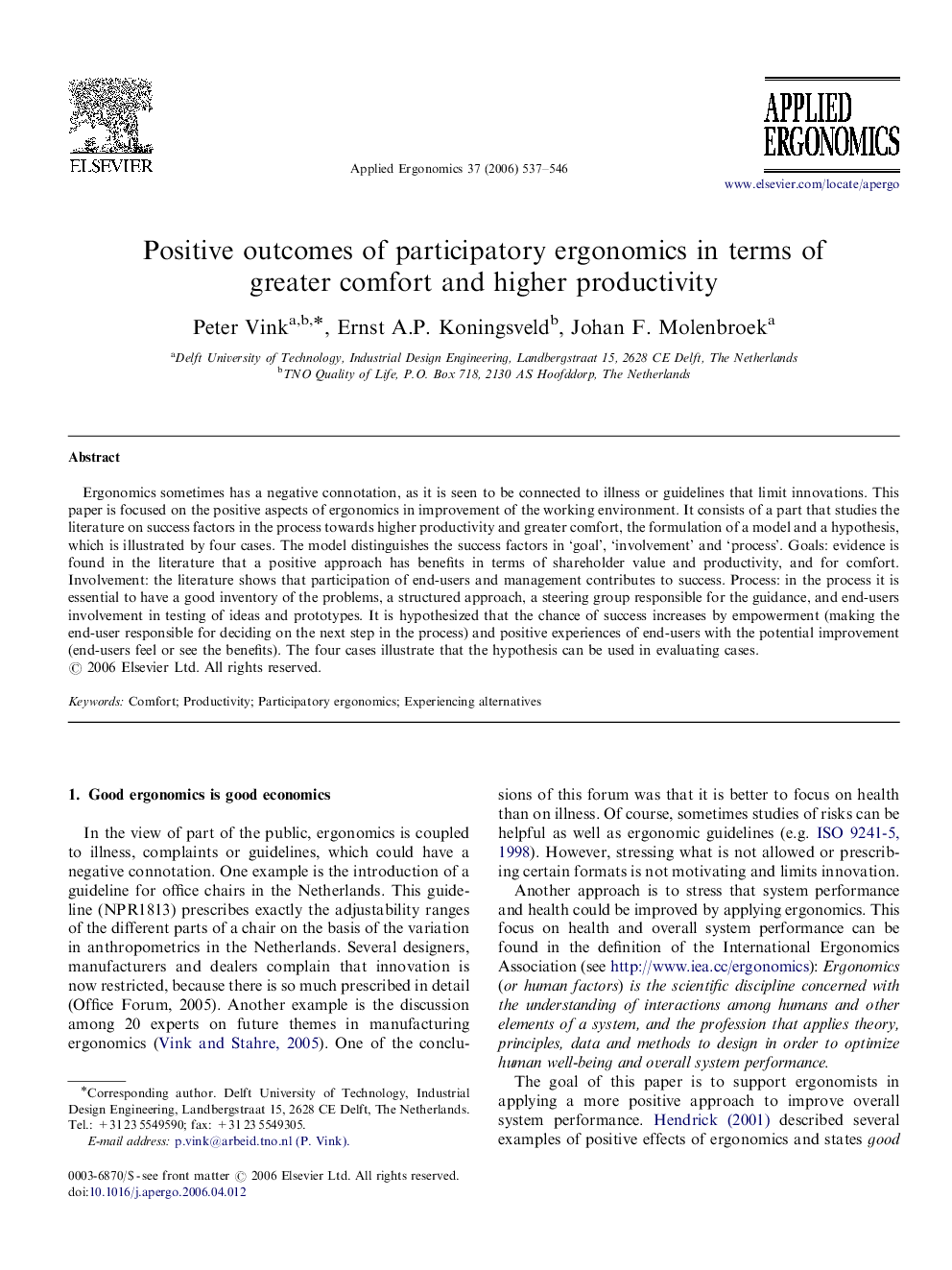| Article ID | Journal | Published Year | Pages | File Type |
|---|---|---|---|---|
| 550418 | Applied Ergonomics | 2006 | 10 Pages |
Ergonomics sometimes has a negative connotation, as it is seen to be connected to illness or guidelines that limit innovations. This paper is focused on the positive aspects of ergonomics in improvement of the working environment. It consists of a part that studies the literature on success factors in the process towards higher productivity and greater comfort, the formulation of a model and a hypothesis, which is illustrated by four cases. The model distinguishes the success factors in ‘goal’, ‘involvement’ and ‘process’. Goals: evidence is found in the literature that a positive approach has benefits in terms of shareholder value and productivity, and for comfort. Involvement: the literature shows that participation of end-users and management contributes to success. Process: in the process it is essential to have a good inventory of the problems, a structured approach, a steering group responsible for the guidance, and end-users involvement in testing of ideas and prototypes. It is hypothesized that the chance of success increases by empowerment (making the end-user responsible for deciding on the next step in the process) and positive experiences of end-users with the potential improvement (end-users feel or see the benefits). The four cases illustrate that the hypothesis can be used in evaluating cases.
